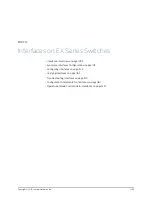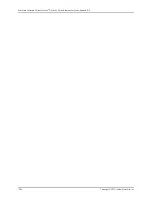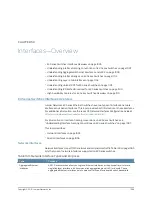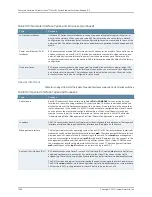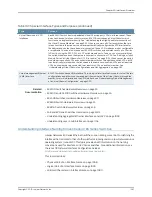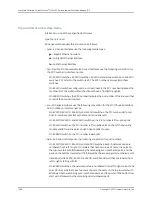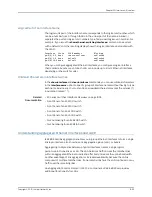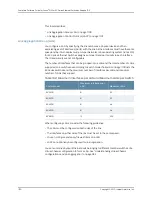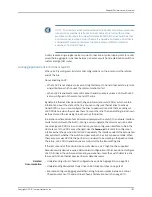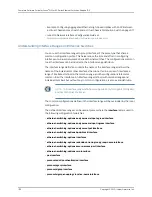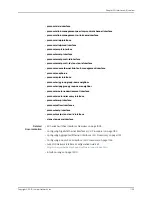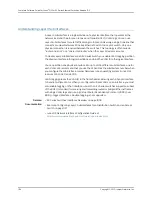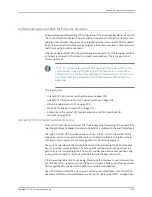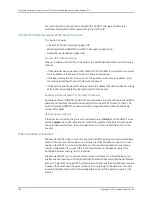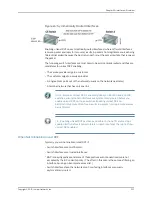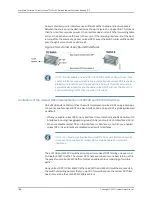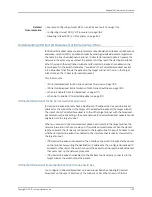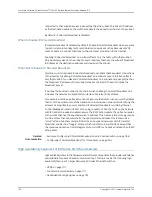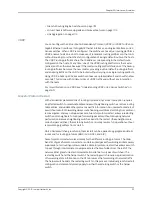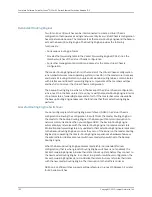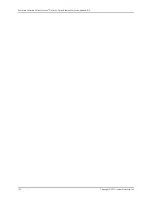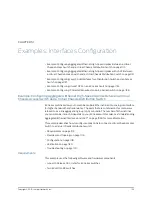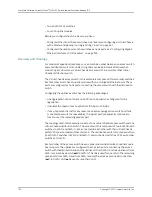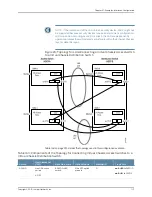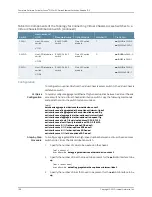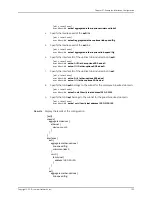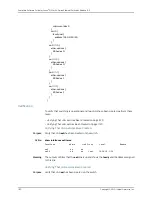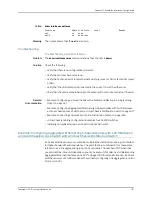
For more information about strict unicast RPF, see RFC 3704,
Ingress Filtering for
Multihomed Networks
at http://www.ietf.org/rfc/rfc3704.txt.
Unicast RPF Implementation for EX Series Switches
This section includes:
•
Unicast RPF Packet Filtering on page 1106
•
Bootstrap Protocol (BOOTP) and DHCP Requests on page 1106
•
Default Route Handling on page 1106
Unicast RPF Packet Filtering
When you enable unicast RPF on the switch, the switch handles traffic in the following
manner:
•
If the switch receives a packet on the interface that is the best return path to the unicast
source address of that packet, the switch forwards the packet.
•
If the best return path from the switch to the packet's unicast source address is not
the receiving interface, the switch discards the packet.
•
If the switch receives a packet that has a source IP address that does not have a routing
entry in the forwarding table, the switch discards the packet.
Bootstrap Protocol (BOOTP) and DHCP Requests
Bootstrap protocol (BOOTP) and DHCP request packets are sent with a broadcast MAC
address and therefore the switch does not perform unicast RPF checks on them. The
switch forwards all BOOTP packets and DHCP request packets without performing
unicast RPF checks.
Default Route Handling
If the best return path to the source is the default route (
0.0.0.0
) and the default route
points to
reject
, the switch discards all unicast RPF packets. If the default route points
to a valid network interface, the switch performs a normal unicast RPF check on the
packets.
When to Enable Unicast RPF
Enable unicast RPF when you want to ensure that traffic arriving on a network interface
comes from a source that resides on a network that that interface can reach. You can
enable unicast RPF on untrusted interfaces to filter spoofed packets. For example, a
common application for unicast RPF is to help defend an enterprise network from
DoS/DDoS attacks coming from the Internet.
Enable unicast RPF only on symmetrically routed interfaces. A symmetrically routed
interface uses the same route in both directions between the source and the destination,
as shown in Figure 24 on page 1107. Symmetrical routing means that if an interface receives
a packet, the switch uses the same interface to send a reply to the packet source (the
receiving interface matches the forwarding-table entry for the best return path to the
source).
Copyright © 2010, Juniper Networks, Inc.
1106
Complete Software Guide for Junos
®
OS for EX Series Ethernet Switches, Release 10.3
Summary of Contents for JUNOS OS 10.3 - SOFTWARE
Page 325: ...CHAPTER 17 Operational Mode Commands for System Setup 229 Copyright 2010 Juniper Networks Inc ...
Page 1323: ...CHAPTER 56 Operational Mode Commands for Interfaces 1227 Copyright 2010 Juniper Networks Inc ...
Page 2841: ...CHAPTER 86 Operational Commands for 802 1X 2745 Copyright 2010 Juniper Networks Inc ...
Page 3367: ...CHAPTER 113 Operational Mode Commands for CoS 3271 Copyright 2010 Juniper Networks Inc ...
Page 3435: ...CHAPTER 120 Operational Mode Commands for PoE 3339 Copyright 2010 Juniper Networks Inc ...
Page 3529: ...CHAPTER 126 Operational Mode Commands for MPLS 3433 Copyright 2010 Juniper Networks Inc ...


